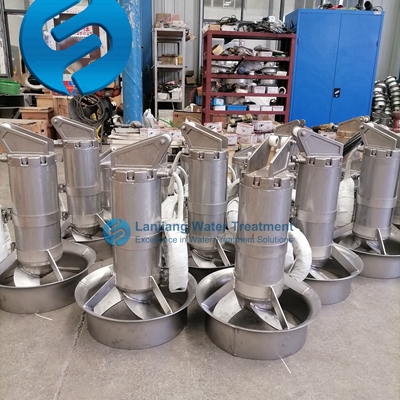The speed requirement of the sewage mixer is not fixed, it depends on a variety of factors, including the nature of the sewage, the purpose of treatment and the type of mixer. Here are some considerations about the speed of the sewage mixer:
1. Sewage properties: Different sewage has different viscosity, density and solid content, and these factors will affect the speed selection of the mixer. For example, for sewage containing a large number of solid particles, a higher rotational speed is required to ensure an even distribution of solid particles.

2. Treatment purpose: The purpose of sewage mixing may include promoting chemical reactions, increasing oxygen transfer, preventing sludge precipitation, etc. Different purposes require different speeds to achieve. For example, in order to promote chemical reactions, higher rotational speeds may be required to increase the rate of material exchange in sewage.
3. Mixer type: Different types of mixers have different speed ranges. For example, propeller mixers usually have a high speed, generally between 800 and 1400 RPM, to provide sufficient mixing force. Other types of mixers, such as low-speed pushers, may rotate at only 35-135 RPM and are mainly used to create a stream of water and prevent sludge settling.
In summary, the speed requirements of the sewage mixer vary according to the actual situation. When choosing the speed, it should be considered comprehensively according to the specific sewage nature, treatment purpose and mixer type. In practical applications, it may be necessary to conduct experiments or consult a professional to determine the best speed setting.
Please note that the above content is for reference only, and the specific speed selection needs to be adjusted and optimized according to the actual situation. At the same time, the operation of the sewage mixer should strictly abide by the relevant safety regulations and operating procedures to ensure the normal operation of the equipment and the safety of personnel.
Post time:2024-06-27